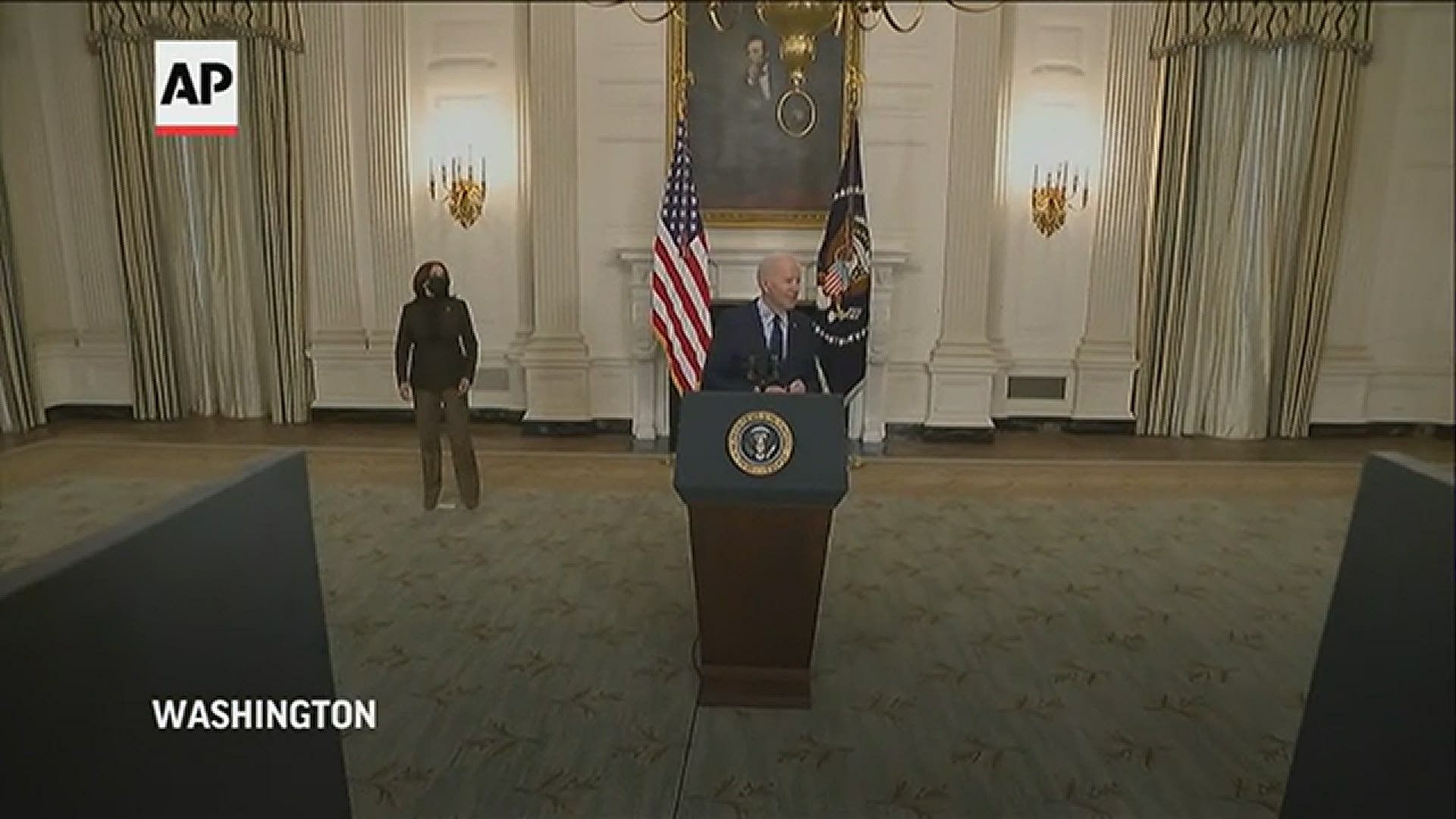WASHINGTON — Since January, Americans have been anxiously waiting for the $1,400 stimulus checks President Joe Biden announced as part of his $1.9 trillion COVID relief plan. The House first passed its version of the “American Rescue Plan” on February 27. The Senate has now passed a different version of the bill, but both contain the direct payments. Now, the House has to take up the bill again before it is signed into law.
In both versions of the bill, individual tax filers making up to $75,000 per year will get $1,400. Couples making up to $150,000 will get $2,800. There will also be $1,400 tacked on for each dependent in the household.
In the House version that was passed, the money paid out phases to zero at $100,000 income for individuals and $200,000 for couples. But in the Senate version, it phased out at $80,000 and $160,000, respectively.
Because of those changes and other amendments in the Senate version of the bill, the plan goes back to the House. Representatives must vote on the Senate version or the two chambers may hold a conference to come to some middle ground.
Roughly 8 million fewer households will get a check under the Senate bill compared with what the House passed, according to an analysis from the Tax Policy Center.
When will the third stimulus check be sent?
Democrats and Biden want to have the COVID-19 relief plan approved by Sunday, March 14. That's when extra unemployment assistance and other pandemic aid expires. House Majority Leader Steny Hoyer said the House will vote Tuesday on the bill. So it appears Democrats should make that March 14 deadline.
During the first round of stimulus checks in April 2020, it took about two weeks for the federal government to start distributing the money. It took around one week for the second round of checks, worth $600, in early January.
If the IRS is able to keep with previous timelines, Americans could start receiving stimulus checks from late March to early April. For example, if the stimulus package is signed into law by March 14, based on previous relief plans, the first direct deposits may go out the week of March 22.
Another possible complicating factor is that this round of stimulus checks will likely be going out while the IRS is dealing with tax returns.
CALCULATOR: Here is a tool from Omni Calculator that may help you determine how much you might receive
Biden's plan called for $1,400 checks for most Americans, which on top of the $600 provided in the most recent COVID-19 bill would bring the total to the $2,000 that Biden has called for.
But Biden initially did not make that differentiation. Biden said on January 4 while campaigning for Democrats Jon Ossoff and Raphael Warnock ahead of Georgia's Senate runoff elections, "Their election will put an end to the block in Washington of that $2,000 stimulus check. That money that will go out the door immediately."
The House bill extended federal unemployment benefits until Aug. 29 and increased that aid to $400 a week. That’s on top of what beneficiaries are getting through their state unemployment insurance program.
The Senate bill would extend the enhanced unemployment benefits through Sept. 6 at $300 a week. Also, the first $10,200 of benefits would non-taxable. The provision applies to households with incomes under $150,000.
The Senate parliamentarian, who advises the Senate on its rules and procedures but has no formal power, ruled last month that a provision to gradually raise the federal minimum wage to $15 per hour must be stripped out. While it was within the power for the Senate to change the rules to allow its inclusion, it did not.
By a vote of 58-42, senators voted against an amendment by Sen. Bernie Sanders, I-Vt., to re-introduce the minimum wage to the bill.
The House version did include the $15 minimum wage increase. The House will have to decide whether it will accept the Senate version that does not have it.
While some $600 second-round stimulus check payments may still be in the mail, the IRS said that it has issued all of them.
So if Americans didn't get a payment or didn't get their full amount, they may be eligible to claim a Recovery Rebate Credit when they file a 2020 tax return.
Eligibility for the credit will be based on the 2020 tax year information, while economic impact payments were based on 2019 (or in some cases 2018) tax information.
As a reminder, the first round of payments was worth up to $1,200 per eligible adult and $500 per dependent. The second was worth up to $600 for each eligible household member. Those who received a larger economic impact payment than they were due will not be penalized. The IRS started accepting 2020 tax returns on February 12.
The Associated Press contributed to this report.

